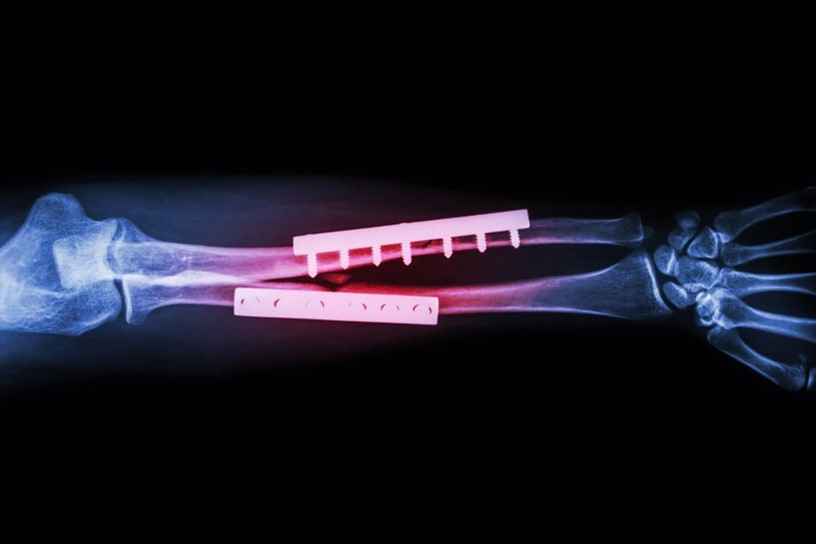Nt Campus
- Home
- EMS with implants – TECNATIVES explains
EMS with implants – TECNATIVES explains

In the field of EMS sports, in some sections of public opinion and even in some expert circles, the concern about a new technology often outweighs openness to new applications.
Thus, medical implants are often seen as an absolute contraindication against the use of EMS. We would like to take a closer look at this blanket rejection today.
Types of implants
Medical implants can be divided into a variety of categories. We restrict ourselves to those that are relevant to us – those with their own electrical functionality, such as a pacemaker, and passive prostheses, such as a bone screw.
Electrically acting implants, especially pacemakers, are indeed a contraindication against EMS. Their effect can be impaired by further electrical stimulation, which is why specific medical care is required. Thus, EMS applications are limited to persons with passive implants.
Electrical behaviour of implants
Implants are made of various modern materials. The only metal used is titanium, which is a relatively good conductor of electricity (its specific resistance is about 25 times higher than that of copper).
Most other implant materials are based on carbon compounds and are therefore hardly electrically conductive.
Current paths through the tissue
EMS currents flow from electrode to electrode through the tissue, preferably where the resistance is low. Without going into the details of the electrical field properties, the following rule of thumb emerges: titanium implants that lie in the current path will attract the current due to their low resistance, which means that less current flows through the surrounding tissue.
Other implants act like resistors, the current hardly flows through them and therefore increasingly through the surrounding tissue. This can have consequences for the stimulation of the muscles, depending on the position of the implants.
Some muscle areas are thus stimulated more strongly, others less strongly. Therefore, the stimulation must be adjusted with special attention to the trainees’ sensation, but this is not harmful to their health.
For example, in a study[1] it could be proven that metallic implants do not lead to increased discomfort when using electrical stimulation.
Is heat a problem?
A resistor through which current flows heats up. So will a titanium prosthesis, through which a large part of the stimulation current flows, heat up.
Due to the low resistance and the low maximum power of the current of 6W, significant heating is not possible. A heating of more than 3 degrees[2] was also ruled out in a scientific study.
Conclusion
Everyone who does sports with implants must be aware of the risks and possibilities.
The effects of overexertion, muscle fatigue and excessive exercise on the health of the person exercising must always be considered and carefully weighed. EMS should be treated with similar caution as any other sport – but may even be more beneficial than traditional high-intensity sports due to the joint friendly stimulation.
We therefore recommend that all interested users listen to their own body and choose the most comfortable and effective form of training. EMS, even with implants, is possible and worth a try.
GET IN TOUCH
Write us a short message to receive your desired information. Alternatively, you can contact one of our distributors in your region directly.















